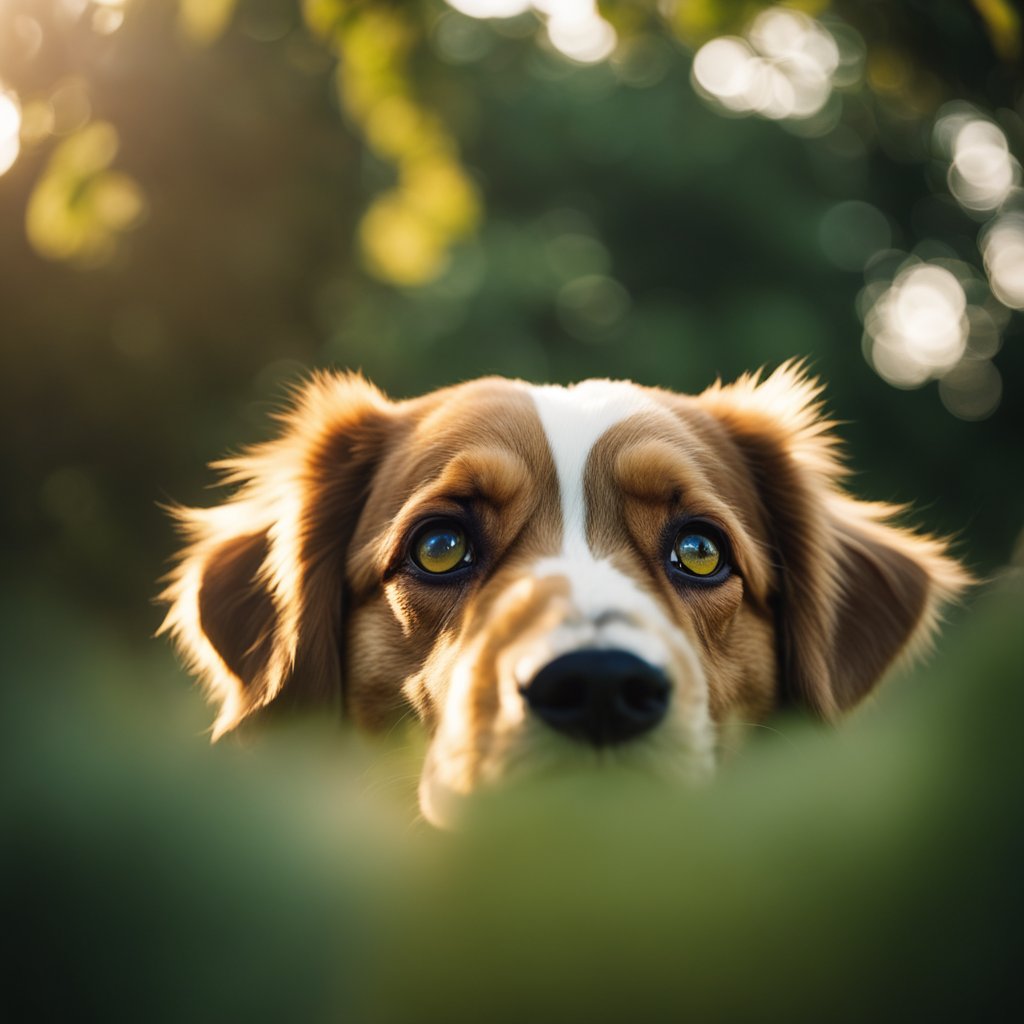How to Get Rid of Stains Under Your Dog’s Eyes
Do you have a furry friend with unsightly stains under their eyes? Eye stains are a common problem for many dogs, and they can be a frustrating and unsightly issue for pet owners. While some dogs are more prone to eye stains than others, there are several strategies you can use to minimize and prevent them from occurring.

Understanding Eye Stains in Dogs is the first step to finding the best solution. Eye stains are caused by a buildup of tears, which can occur for a variety of reasons, including genetics, allergies, and eye infections. Certain breeds, such as Maltese, Poodles, and Shih Tzus, are more prone to eye stains than others due to their facial structure. However, any dog can develop eye stains, and it’s important to address them promptly to prevent further irritation and infection.
Removal and Prevention Strategies are essential to keeping your dog’s eyes healthy and clean. Regular grooming is crucial, including daily cleaning and trimming around the eyes. Use a damp cloth or cotton ball to gently clean the area around the eyes, being careful not to get any water in their eyes. Additionally, consider changing your dog’s diet to a high-quality, grain-free food that is free of artificial colors and preservatives. This can help reduce the amount of tear production and minimize the risk of eye stains.
Key Takeaways
- Eye stains are caused by a buildup of tears and can occur for a variety of reasons.
- Regular grooming, including daily cleaning and trimming around the eyes, can help prevent and minimize eye stains.
- Changing your dog’s diet to a high-quality, grain-free food can also help reduce tear production and minimize the risk of eye stains.
Understanding Eye Stains in Dogs
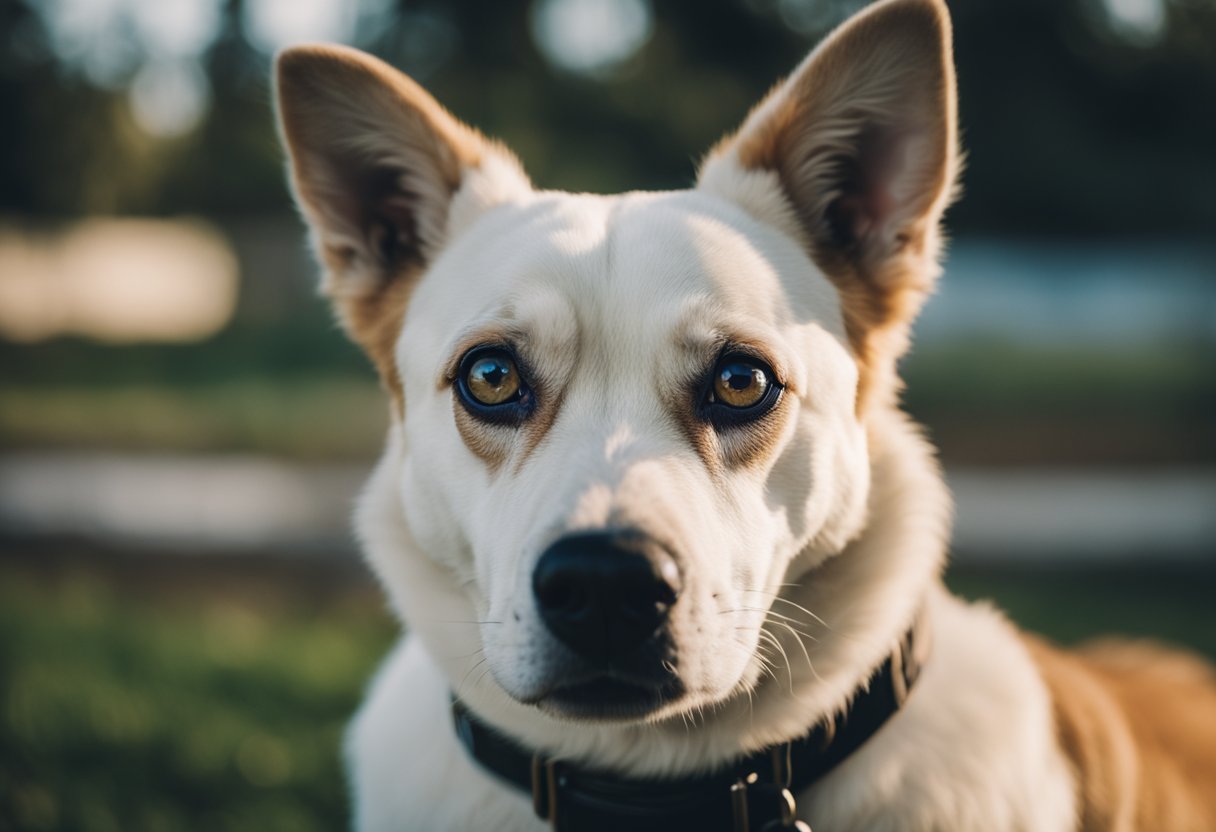
If you’re a dog owner, you may have noticed reddish-brown stains under your dog’s eyes. These are known as eye stains, and they are a common problem in many breeds, especially those with white or light-colored fur. Eye stains are caused by a variety of factors, and can be difficult to get rid of. In this section, we’ll explore the causes and types of eye stains in dogs.
Causes of Eye Stains
Eye stains can be caused by a number of factors, including:
- Excessive tearing: Dogs with shallow eye sockets or blocked tear ducts may produce more tears than they can properly drain, leading to eye stains.
- Irritation: Allergies, infections, and other irritants can cause your dog’s eyes to water, leading to eye stains.
- Diet: Some dogs are more prone to eye stains due to their diet. Foods that contain high levels of iron, for example, can cause reddish-brown staining under the eyes.
- Genetics: Certain breeds are more prone to eye stains than others. Breeds with shallow eye sockets, such as Shih Tzus and Pekingese, are more likely to develop eye stains.
Types of Eye Stains
There are two main types of eye stains in dogs:
- Epiphora: This is the medical term for excessive tearing, which can lead to eye stains.
- Porphyrin stains: Porphyrins are natural pigments found in tears, saliva, and urine. When porphyrins accumulate under your dog’s eyes, they can cause reddish-brown staining.
It’s important to note that while eye stains are generally harmless, they can sometimes be a sign of an underlying health problem. If you notice sudden or severe eye stains, or if your dog seems to be in pain or discomfort, it’s important to consult your veterinarian.
Removal and Prevention Strategies
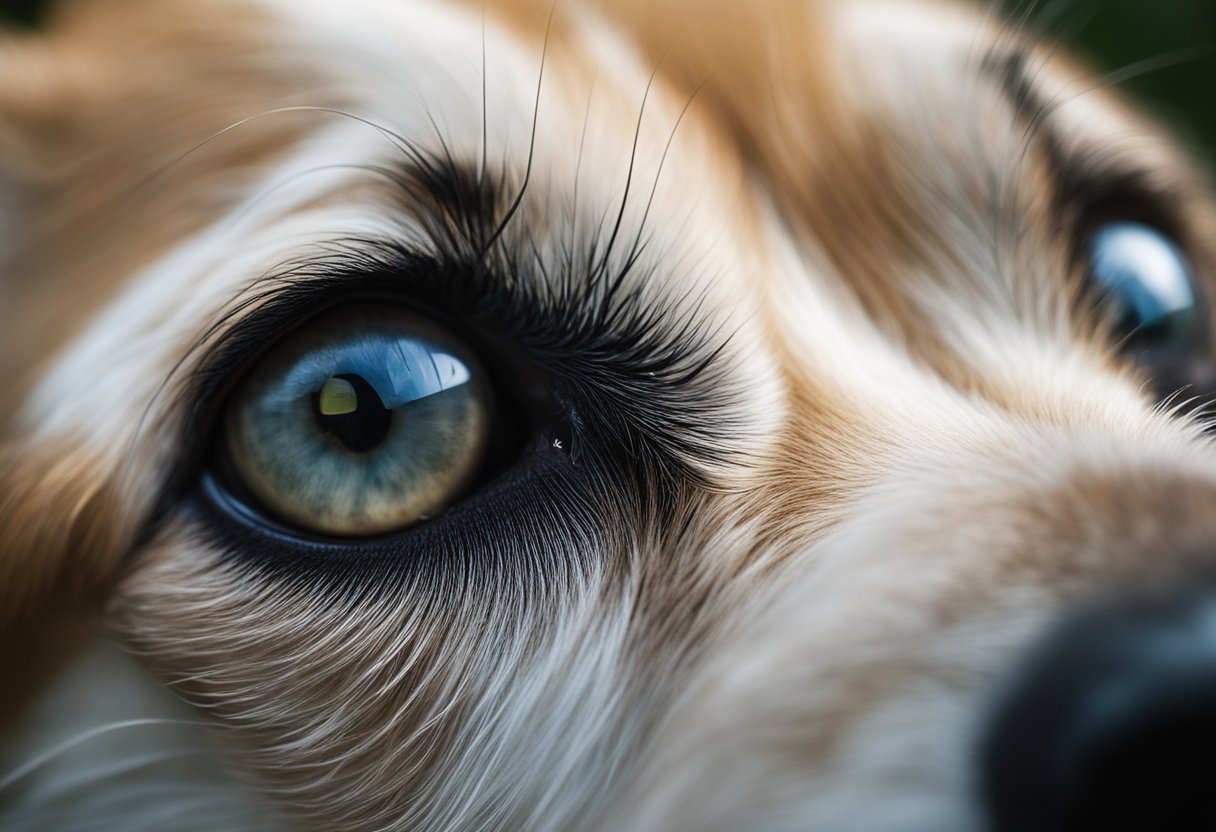
If your furry friend is suffering from tear stains, there are several methods that you can try to remove them. In addition, there are preventative measures that you can take to keep the stains from coming back.
Home Remedies for Eye Stains
There are several home remedies that you can use to remove tear stains from your dog’s eyes. One of the most popular is to use a mixture of hydrogen peroxide and cornstarch. Simply mix equal parts of the two ingredients together to form a paste. Apply the paste to the stained area and let it sit for a few minutes. Then, use a damp cloth to wipe away the paste. Be sure to rinse the area thoroughly with water to remove any residue.
Another popular home remedy is to use apple cider vinegar. Simply mix a teaspoon of apple cider vinegar with a cup of water and apply the mixture to the stained area with a cotton ball. Be sure to rinse the area thoroughly with water to remove any residue.
Professional Treatment Options
If home remedies do not work or if the tear stains are severe, you may want to consider professional treatment options. One option is to have your veterinarian prescribe an antibiotic ointment or medication to treat any underlying infections that may be causing the tear stains. Another option is to have your dog undergo a tear duct flushing procedure to remove any blockages in the tear ducts.
Preventative Measures
To prevent tear stains from occurring in the first place, there are several preventative measures that you can take. One of the most important is to keep your dog’s face clean and dry. Use a damp cloth to wipe away any tears that may accumulate around the eyes. Be sure to dry the area thoroughly to prevent bacteria from growing.
In addition, you may want to consider changing your dog’s diet. Some dogs are more prone to tear stains than others, and certain foods may exacerbate the problem. Talk to your veterinarian about a diet that is best for your dog.
Lastly, you can try using stainless steel or ceramic food and water bowls. Plastic bowls can harbor bacteria and may contribute to tear stains. By implementing these preventative measures, you can help keep your furry friend’s eyes clean and free of tear stains.
Resources
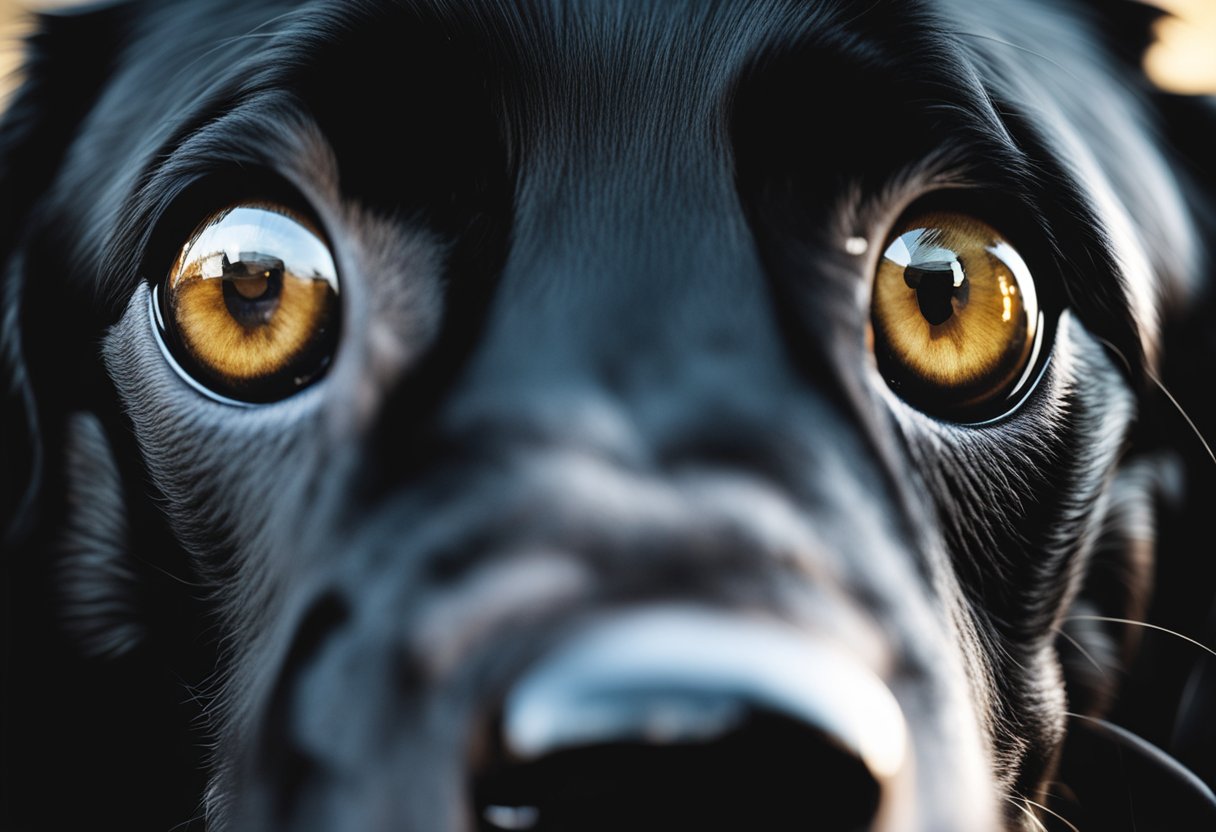
If you’re looking to get rid of the stains under your dog’s eyes, there are several resources available to you. Here are a few options to consider:
1. Tear Stain Removers
There are a variety of tear stain removers available on the market that can help remove the stains under your dog’s eyes. These products are typically applied topically and can help break down the proteins that cause the stains. Some popular options include Angel’s Eyes, Eye Envy, and TropiClean Spa Tear Stain Remover.
2. Natural Remedies
If you prefer to use natural remedies, there are several options to consider. For example, some dog owners claim that adding a teaspoon of apple cider vinegar to their dog’s water or meal each day can help remove tear stains. Additionally, wiping your dog’s eyes with a warm, damp cloth on a regular basis can help prevent tear stains from forming in the first place.
3. Grooming
Regular grooming can also help prevent and remove tear stains. Keeping the fur around your dog’s eyes trimmed can help prevent irritation, which can lead to tear stains. Additionally, wiping your dog’s eyes on a regular basis can help remove any excess tears before they have a chance to stain the fur.
Overall, there are several options available to you if you’re looking to get rid of the stains under your dog’s eyes. Whether you choose to use tear stain removers, natural remedies, or regular grooming, the key is to be consistent and patient. With time and effort, you can help your dog look and feel their best.
Conclusion
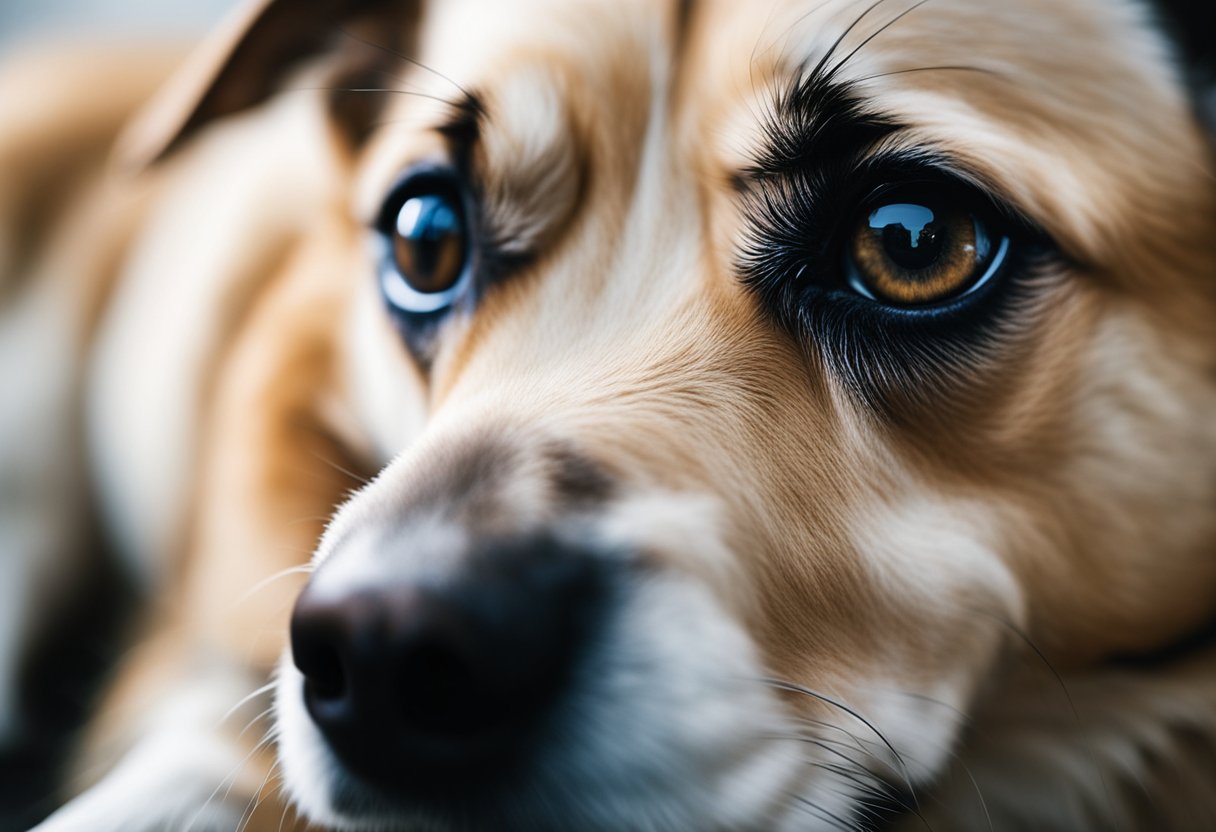
In conclusion, there are several ways to prevent and treat tear stains under your dog’s eyes. Regular grooming and keeping the eye area dry are the best prevention methods. You can also use purified, distilled, or reverse-osmosis water sources to reduce the minerals and impurities that can cause tear stains.
If your dog already has tear stains, cleaning the affected area with warm water or saline solution can help remove them. You can also try using a dog-safe eyewash to remove any excess tears. Be sure to keep the fur around the eyes trimmed to prevent irritation and infection.
Some dog owners claim that adding apple cider vinegar to their dog’s water or meal each day helps remove tear stains. While there is no hard proof that this approach works, it may be worth trying if you are looking for a natural remedy.
Remember, it’s important to consult with your veterinarian before trying any new treatments or remedies. They can help you determine the underlying cause of your dog’s tear stains and recommend the best course of action. With a little patience and persistence, you can help keep your dog’s eyes clean and healthy.
Frequently Asked Questions
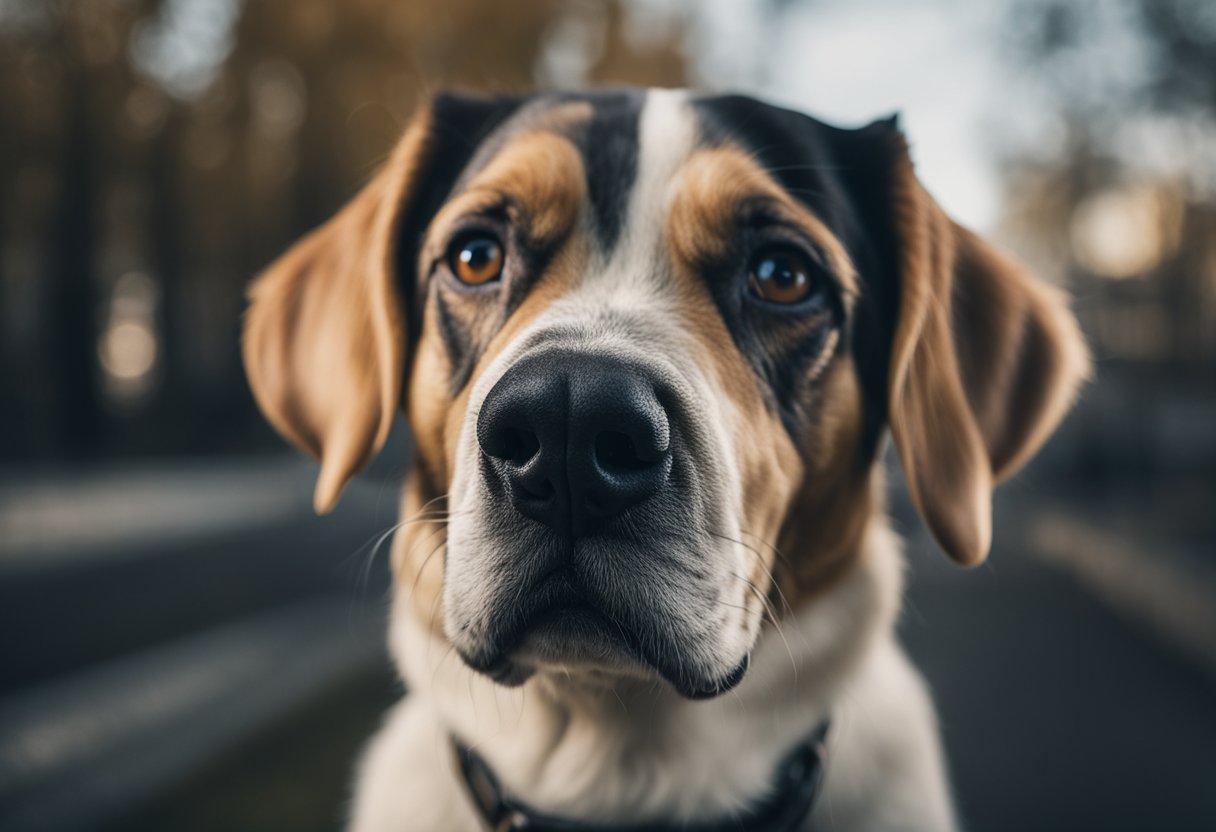
What natural remedies can help remove my dog’s tear stains?
Natural remedies such as apple cider vinegar, chamomile tea, and coconut oil can help remove tear stains from your dog’s face. Apple cider vinegar can be added to your dog’s water or meal to prevent new stains from forming. Chamomile tea can be used to clean the area around your dog’s eyes, while coconut oil can be used to moisturize and soothe the skin.
What causes sudden tear staining in dogs?
Sudden tear staining in dogs can be caused by a variety of factors, including allergies, infections, and genetics. If you notice sudden tear staining in your dog, it is important to take them to the vet to rule out any underlying health issues.
How can I safely use coconut oil to clean my dog’s tear stains?
To safely use coconut oil to clean your dog’s tear stains, apply a small amount of coconut oil to a clean, damp cloth and gently wipe the area around your dog’s eyes. Be sure to avoid getting coconut oil in your dog’s eyes, as this can cause irritation.
What are the most effective methods to prevent tear stains in dogs?
The most effective methods to prevent tear stains in dogs include keeping the area around your dog’s eyes clean and dry, trimming the hair around your dog’s eyes, and using a high-quality diet. Additionally, it is important to identify and address any underlying health issues that may be causing tear staining.
What steps do professional groomers take to eliminate tear stains on dogs?
Professional groomers may use a variety of techniques to eliminate tear stains on dogs, including trimming the hair around the eyes, using a specialized tear stain remover, and applying a topical antibiotic ointment. It is important to note that tear staining can be difficult to eliminate completely, and may require ongoing maintenance to keep under control.
How can I remove brown discoloration from my dog’s facial fur?
To remove brown discoloration from your dog’s facial fur, you can use a specialized tear stain remover or a mixture of hydrogen peroxide and cornstarch. Be sure to follow the instructions carefully and avoid getting any solution in your dog’s eyes. It is also important to address any underlying health issues that may be causing tear staining.
